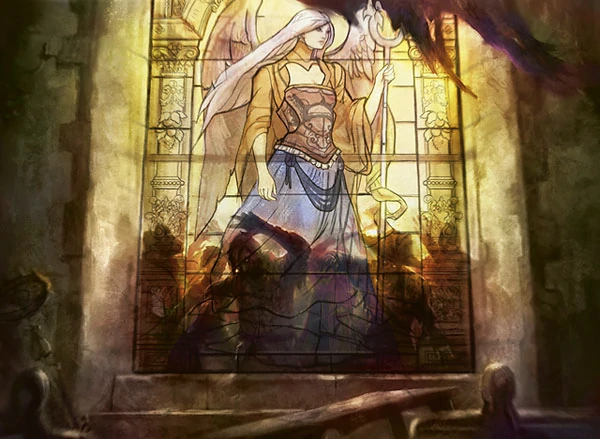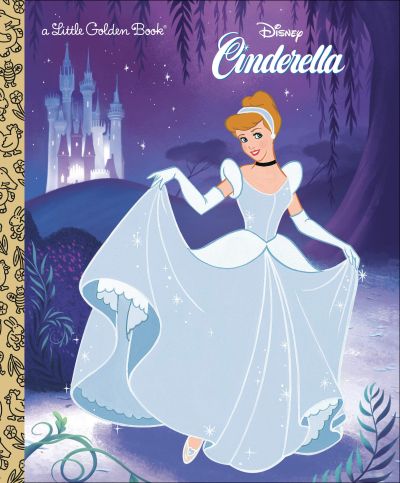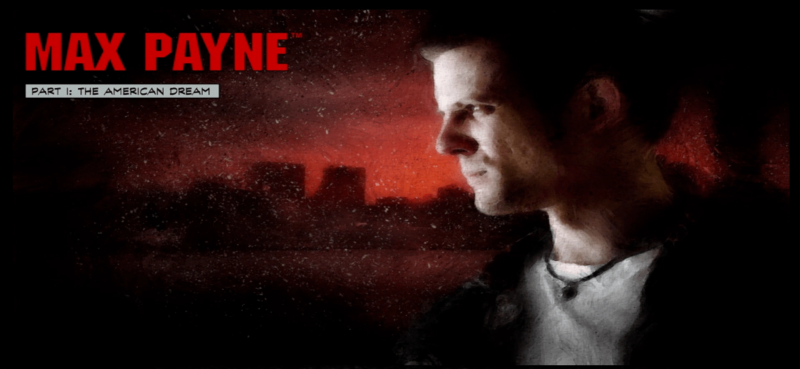Resonance is important
The example that he gives comes from creating the sets Innistrad and Dark Ascension. To get cards that resonated with the desired set's horror theme a technique was used, which was to create names first and from the names the cards themselves. That's called top-down design. The other way around is bottom up, where the card's mechanic is made first and then a name is chosen. The top-down design choice was successful.

Magic didn't create demons, angels, sorceries or zombies. All that already exists in movies, fiction work and arts. What he is trying to say is that you can and should take pre-existing knowledge and create your own universe with that knowledge. Every player has a vast cultural knowledge on something and that means that you can and should take advantage of this fact. Resorting to what players known and relate to is a powerful tool. Sometimes the designer wants to innovate and create something new that has never been done before, but that comes along a high risk of creating something that doesn't resonate with the players because they have no references to relate to.
There are two aspects here. Resonance between the game and the players and resonance within the game. The first one is about making players feel attached to the game, because if they don't, they aren't going to play it. The second is about coherence and cohesion. Each part of the game has to resonate with each other. Mark is focusing on the first. The players must recognize something in the game that makes them feel enticed to play it. For the players to recognize something the game has to resonate with them by presenting references to the player's culture, their knowledge and their emotions. In here I'd add that we often want to present something new, unique but strive so hard for this that we forget to take advantage of existing cultural references and established standards. For example: flying is universal. People understand what flying means and magic takes advantage of this to make creatures with flying that are easy to understand. Every player immediately understands the rules for creatures with flying without much effort. Had we chosen to create a new ability out of nowhere, chances are that the players would be faced with the question "What is this?", which is undesired.

Let's practice his idea. Think about Cinderella. In that famous faery tale there are some characters and objects that everybody knows. Cards based on Cinderella's tale would be: Crystal Shoes, Wicked Stepmother, Fairy and Pumkin Carriage. We have there two artifacts and two creatures. The abilities of those cards would have some relationship to what those things are in Cinderella's tale. They would relate to magic, beauty, envy and jealous. See? From a famous tale we have some pretty strong cultural references. Even if we were to write a new faery tale we'd probably be inspired by already existing tales. Mark notes that resonance takes on multiple layers that range from naming the card and giving it an art that fits it, all the way to the world itself where the set takes place.

Max Payne for example. Max Payne's main theme is a police officer that wages war against drug dealers in an urban setting. These are common themes in many movies and novels. There aren't forests, caverns or mountains in Max Payne. The game is very successful in tying all its elements together. Max Payne didn't create police officers fighting drugs or the city of New York, it borrowed those to create a world that is both believable and feasible. When people think about New York they usually remember the skyscrapers and the yellow taxis. Let's think about what Max Payne resonates with. First, the character was intentionally named "Max Payne", with "Payne" sounding similar to "Pain". Drugs, police and crimes. It's pretty clear that there is a lot of pain in the game and in the main character's backstory. About the city, New York is famous and known worldwide. What if they had made the same game, but taking place in a small city from a lesser known country? Probably they would have made a much smaller impact than they did by choosing New York.
As a bottom note I should mention that resonance is very closely related to stereotypes. Magic has the majority of its player base composed of men. How can they attract more women to the game? They have to make magic resonate more with women. How? I'd guess by making more female characters, making art that is more feminine and somehow promoting women. Stretching this and we could think about bad stereotypes, prejudice and xenophobia. But that's a broad and complex topic that I don't have enough wisdom to discuss here. I'd just give an example from Max Payne 3. The game takes place in São Paulo, Brazil. I think, as a brazilian, that they made a bit of a confusion between Rio de Janeiro (another city from Brazil) and São Paulo in regards to the slangs and cultural references in the game. When a game, even if unknowingly, presents a biased view of a country or culture it can have the same impact as the media when they present a distorted view of those. We have to be careful to not offend or generate unwanted reactions from our target audience.
All that relates to market research and ongoing trends. Mark is saying that it's very important to know what your target audience likes and what kind of culture they relate to. A game may very well fail by attempting to bring something totally new that pleases no one or an audience that is too small. Prey 2006 for instance, it mixed native americans with aliens invading earth and ended with no clear resonance with either of the two. If you compare to how Diablo and Doom resonate with the Christian vision of Hell. The previous two games were much more successful, commercially and design wise.